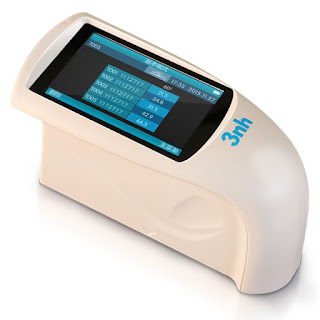Gloss Meter & Its Types
Many individuals and businesses have a gloss meter in their inventory to measure the quality of finishes. The finished product is tested with a gloss meter to check if the paint or varnish has been evenly applied or if the finish is too glossy or not shiny enough. A high gloss will produce a reading on the meter while relatively low readings are usually found on surfaces that have been treated with an anti-glare, no-vinyl, semi-matte, flat paint coating.
The gloss meter is equipped with a mirror which reflects light back onto an angled, prismatic surface that deflects it at various angles and into varying lengths of time as it travels through different materials. The surface material can also be made up of several layers to detect multi-layer systems and the gloss meter is placed at an angle of 45 degrees to the surface. A reflected beam of light will reflect off of the surface before it travels back through the gloss meter's prismatic lens and into a receiver aperture hole, allowing for accurate results.
Air bubbles and dust particles can interfere with the reading so they must be removed before reading a new area. The best way to read the level of gloss is by using a mirror attached on top of the gloss meter so it projects onto a flat surface in front of it, as this allows both sides to be read at once and will allow for an accurate reflection.
A Gloss meter is a simple, compact device that has a high degree of accuracy. It takes just a few seconds to read a level of gloss and there are only two parts to this device: the gloss meter itself and the sensor. Everything else has been included in one compact unit: the mirror, prismatic lens, receiver arm, beam detector and power supply.
The BYK gloss meter is an electrical device that measures the amount of light being reflected at any given point on a surface. A light beam enters through the prismatic lens creating an image of whatever it's facing on the surface. Then, the light is scattered and dispersed by the materials it comes in contact with. The amount of scattered light that makes it to the prismatic lens allows for an accurate reading to be made.
The meter will read a level of gloss based on the intensity of light reflected back toward the prismatic lens. A high-pressure lamp is used in many gloss meters because it has a wide beam of light that travels a longer distance through different types of materials. When tested, gloss meters are put in a 45 degree angle facing up towards the surface being tested and held approximately 6 to 8 inches away from it.
A surface that reflects more light will give a higher reading than one that doesn't reflect as much. The micro tri-gloss meter is a handheld optical instrument used for determining the gloss values of a surface. This glossmeter employs three lights, a distance lens, and an optical collector to measure the light reflected off the measured surface in order to calculate the gloss value.
This is achieved by illuminating an area on the surface with a point source of light from one side and measuring how much light is reflected off that spot at different angles to find what are known as "Glare Angle" measurements.
About TestCoat:
For many years, TestCoat has been a trustworthy partner and leader in the supply and distribution of inspection equipment, laboratory & physical test equipment for the coatings and paint industries. We supply non-destructive quality control and testing instruments such as Paint thickness Mil Gauges, micro tri gloss, portable and benchtop metal hardness testers, laboratory mixersviscometers, film applicatorsdrying time recorder, cupping testers, Wet scrub abrasion testers, Coating inspection kits with advanced technology, and of the highest standards.
For more information, visit https://www.testcoat-usa.com/




Comments
Post a Comment